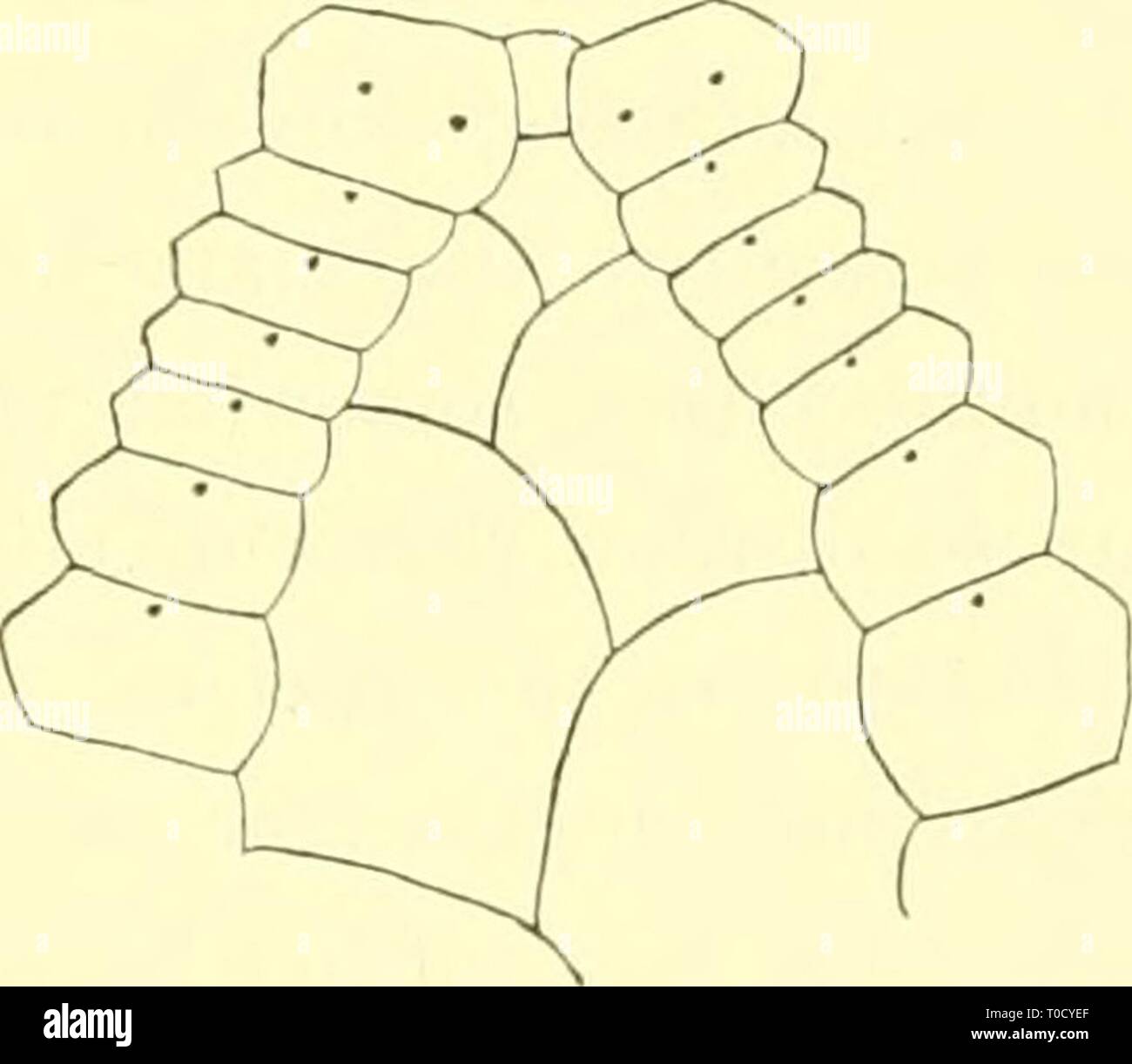Echinoidea (1903) Echinoidea echinoidea00mort Year: 1903 ECHINOIDEA. II. 51 ferous pedicellariæ (PI. X. Figs. 9, 11) are very characteristic, the valvcs ending in a single long tootli, at a right angle with the narrow blade, which form.s a flattened, closed tube. A.s in Urcclii)iits the valves are clad with a thick, dark, evidently glandular .skin. No neck; the stalk is more compactthan in Vrrcliiniis. In the two globiferous pedicellariæ I have seen, the valves are unsymmetrically devel- oped in the basal part, the one figured from the inside being the most regular of them. Whether this is a

Image details
Contributor:
Bookworm / Alamy Stock PhotoImage ID:
T0CYEFFile size:
5.7 MB (88 KB Compressed download)Releases:
Model - no | Property - noDo I need a release?Dimensions:
1515 x 1320 px | 25.7 x 22.4 cm | 10.1 x 8.8 inches | 150dpiMore information:
This image is a public domain image, which means either that copyright has expired in the image or the copyright holder has waived their copyright. Alamy charges you a fee for access to the high resolution copy of the image.
This image could have imperfections as it’s either historical or reportage.
Echinoidea (1903) Echinoidea echinoidea00mort Year: 1903 ECHINOIDEA. II. 51 ferous pedicellariæ (PI. X. Figs. 9, 11) are very characteristic, the valvcs ending in a single long tootli, at a right angle with the narrow blade, which form.s a flattened, closed tube. A.s in Urcclii)iits the valves are clad with a thick, dark, evidently glandular .skin. No neck; the stalk is more compactthan in Vrrcliiniis. In the two globiferous pedicellariæ I have seen, the valves are unsymmetrically devel- oped in the basal part, the one figured from the inside being the most regular of them. Whether this is a constant feature it is, of course, impossible to decide from such scanty material. The ophicephalous pedicellariæ (PI. X. Fig. 26) ha-e low and broad valves, somewhat sinuate and ver)' fineh- and closely serrate along the edge of the blade down to the apophysis. The upper end of the stalk as usual cupshaped. The tridentate pedicellariæ occur in two distinct forms; the one (PL X. Fig. 22) has very long and narrow vah'es, somewhat widened in about the outer third, where the -al-es join. The edge of tilis widened part is closely serrate; in the lower, narrowed part the edge has onh' some ver' few small thorns. The blade is open along the whole length; there may be a faint indication of a meshwork in the blade. This form reaches a length of ca. 1-2''™ (head). The other form (PI. X. Fig. 8) has the blade almost, sometimes completely, closed as a tube in the lower half; the outer half is spoonshaped widened, with the edges fineiy serrate. In smaller specimens the narrowed part of the blade is shorter, in quite small ones it is not narrowed at all, the blade being simply leaf-shaped. This form is much smaller than the former, the largest ones seen being ca. 0-5'''. The trijjhyllons pedicellariæ (PI. X. Fig. 14) are like those of Urech. gigcnitnis, only somewhat more narrowed below the blade. — The spicules and the rods supporting the filaments of the actinal tube- feet as